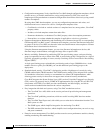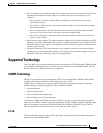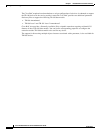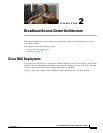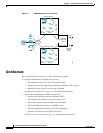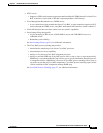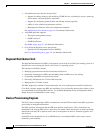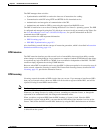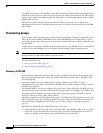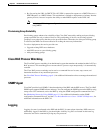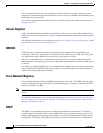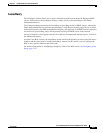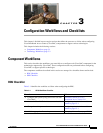
2-6
Cisco Broadband Access Center 3.8 Administrator Guide
OL-27172-01
Chapter 2 Broadband Access Center Architecture
Architecture
Cisco BAC now provides a mechanism to license DPE extension feature packs. The feature pack licenses
indicate the count of the devices that can be processed by the feature pack extension. The feature pack
licenses can be added to the RDU through Cisco BAC admin UI or API independently with or without
CWMP / DPE licenses.
DPEs that are rejected during registration because of licensing constraints, do not appear in the
administrator user interface. To determine the license state, you need to examine the log files of the RDU
and the DPE.
Provisioning Groups
A provisioning group is designed to be a logical (typically geographic) grouping of servers that usually
consist of one or more DPEs, CNR-DHCP servers and CAR-RADIUS servers. Each DPE in a given
provisioning group, caches identical sets of instructions from the RDU; thus enabling redundancy and
load balancing.
A single provisioning group can handle the provisioning needs of up to 500,000 devices. As the number
of devices grows past 500,000, you can add additional provisioning groups to the deployment.
Note The servers for a provisioning group are not required to reside at a regional location, they can just as
easily be deployed in the central network operations center.
For more information, see:
• Discovery of ACS URL, page 2-6
• Provisioning Group Scalability, page 2-7
Discovery of ACS URL
In the distributed architecture that Cisco BAC provides, the RDU is the centralized aggregation point
that never directly interacts with a CPE. Any required interactions with the CPE are delegated to the
provisioning group.
Each device identifies the provisioning group to which it connects by the URL of a single
autoconfiguration server (ACS); in other words, the DPE. Until the URL is updated, the device contacts
the DPE at the same URL.
All redundant DPEs in a given provisioning group, must share a single ACS URL. The RDU has to be
aware of the URL that is associated with each provisioning group and, by extension, of all DPEs in that
provisioning group. The RDU uses its knowledge of the provisioning group’s ACS URL to redirect
devices to a new provisioning group, when required.
The RDU automatically learns the provisioning group’s ACS URL from DPE registrations; or the ACS
URL is configured on the provisioning group object, using the API or the administrator user interface.
For information on configuring the ACS URL, see Provisioning Group Configuration Workflow,
page 3-8.
The CPE can determine the ACS (DPE) URL in one of two ways:
• By preconfiguring the URL on the device. This ACS URL is the configured URL of the Cisco BAC
server that is associated with each provisioning group. The URL is preconfigured on the device
before it is shipped to the customer, and is also known as the assigned URL.



